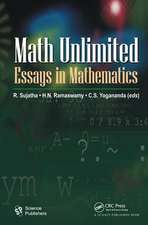Nanoparticle Heat Transfer and Fluid Flow: Computational & Physical Processes in Mechanics & Thermal Scienc
Editat de W. J. Minkowycz, E Sparrow, J. P. Abrahamen Limba Engleză Paperback – 29 mar 2017
Topics include:
- A broad review of nanofluid applications, including industrial heat transfer, biomedical engineering, electronics, energy conversion, membrane filtration, and automotive
- An overview of thermofluids and their importance in biomedical applications and heat-transfer enhancement
- A deeper look at biomedical applications such as nanoparticle hyperthermia treatments for cancers
- Issues in energy conversion from dispersed forms to more concentrated and utilizable forms
- Issues in nanofluid properties, which are less predictable and less repeatable than those of other media that participate in fluid flow and heat transfer
- Advances in computational fluid dynamic (CFD) modeling of membrane filtration at the microscale
- The role of nanofluids as a coolant in microchannel heat transfer for the thermal management of electronic equipment
- The potential enhancement of natural convection due to nanoparticles
| Toate formatele și edițiile | Preț | Express |
|---|---|---|
| Paperback (1) | 585.27 lei 43-57 zile | |
| CRC Press – 29 mar 2017 | 585.27 lei 43-57 zile | |
| Hardback (1) | 1383.05 lei 43-57 zile | |
| CRC Press – 4 dec 2012 | 1383.05 lei 43-57 zile |
Preț: 585.27 lei
Preț vechi: 688.56 lei
-15% Nou
Puncte Express: 878
Preț estimativ în valută:
111.99€ • 117.22$ • 93.21£
111.99€ • 117.22$ • 93.21£
Carte tipărită la comandă
Livrare economică 31 martie-14 aprilie
Preluare comenzi: 021 569.72.76
Specificații
ISBN-13: 9781138076549
ISBN-10: 1138076546
Pagini: 342
Ilustrații: approx 215 equations; 22 Tables, black and white; 137 Illustrations, black and white
Dimensiuni: 156 x 234 x 18 mm
Greutate: 0.45 kg
Ediția:1
Editura: CRC Press
Colecția CRC Press
Seria Computational & Physical Processes in Mechanics & Thermal Scienc
Locul publicării:Boca Raton, United States
ISBN-10: 1138076546
Pagini: 342
Ilustrații: approx 215 equations; 22 Tables, black and white; 137 Illustrations, black and white
Dimensiuni: 156 x 234 x 18 mm
Greutate: 0.45 kg
Ediția:1
Editura: CRC Press
Colecția CRC Press
Seria Computational & Physical Processes in Mechanics & Thermal Scienc
Locul publicării:Boca Raton, United States
Public țintă
Professional Practice & DevelopmentCuprins
Review of Nanofluid Applications. The Role of Nanoparticle Suspensions in Thermo/Fluid and Biomedical Applications. Multiscale Simulation of Nanoparticle Transport in Deformable Tissue during an Infusion Process in Hyperthermia Treatments of Cancers. Superparamagnetic Iron Oxide Nanoparticle Heating: A Basic Tutorial. Light-Induced Energy Conversion in Liquid Nanoparticle Suspensions. Radiative Properties of Micro/Nanoscale Particles in Dispersions for Photothermal Energy Conversion. On the Thermophysical Properties of Suspensions of Highly Anisotropic Nanoparticles with and without Field-Induced Microstructure. Advances in Fluid Dynamic Modeling of Microfiltration Processes. Computational Analysis of Enhanced Cooling Performance and Pressure Drop for Nanofluid Flow in Microchannels. Natural Convection in Nanofluids. Index.
Notă biografică
W.J. Minkowycz is the James P. Hartnett Professor of Mechanical Engineering at the University of Illinois at Chicago. He joined the faculty at UIC in 1966. His primary research interests lie in the numerical modeling of fluid flow and heat transfer problems. Professor Minkowycz is currently the editor-in-chief of the International Journal of Heat and Mass Transfer, Numerical Heat Transfer, and International Communications in Heat and Mass Transfer. He has won numerous awards for his excellence in teaching, research, and service to the heat transfer community.
E.M. Sparrow is a professor of mechanical engineering at the University of Minnesota. He has taught and performed research there since 1959. Prior to that, he worked in industry. He is a member of the National Academy of Engineering, a Max Jakob awardee, and is a Morse Alumni Distinguished Teaching Professor and Institute Professor. He has published more than 750 peer-reviewed articles on a wide variety of topics in heat transfer and fluid flow and has guided the research for 90 Ph.D. degrees and 215 MS degrees.
Dr. John Abraham has worked in the area of thermal sciences for approximately 20 years. His research areas include nanoscale thermal processes, energy production and distribution, climate monitoring, and medical device development. He has approximately 150 journal publications, conference presentations, book chapters, and patents. Dr. Abraham teaches courses in undergraduate and graduate mechanical engineering programs at the University of St. Thomas, in St. Paul, Minnesota.
E.M. Sparrow is a professor of mechanical engineering at the University of Minnesota. He has taught and performed research there since 1959. Prior to that, he worked in industry. He is a member of the National Academy of Engineering, a Max Jakob awardee, and is a Morse Alumni Distinguished Teaching Professor and Institute Professor. He has published more than 750 peer-reviewed articles on a wide variety of topics in heat transfer and fluid flow and has guided the research for 90 Ph.D. degrees and 215 MS degrees.
Dr. John Abraham has worked in the area of thermal sciences for approximately 20 years. His research areas include nanoscale thermal processes, energy production and distribution, climate monitoring, and medical device development. He has approximately 150 journal publications, conference presentations, book chapters, and patents. Dr. Abraham teaches courses in undergraduate and graduate mechanical engineering programs at the University of St. Thomas, in St. Paul, Minnesota.
Descriere
This work features contributed chapters on heat transfer and fluid flow processes in nanomaterials and nanofluids, an area of increasing importance in engineering. Leading experts explore a wide range of topics, including nanomaterial properties, nanotechnology for biological heat transfer, multiscale nano-simulations, energy conversion, nanotreatments for cancers, fluid dynamic modeling, nanofiltration, microchannel flow, and natural convection of nanofluids. The book presents the state of the art and offers a view of the future, making it a valuable resource for experts as well as newcomers to this growing field.
























